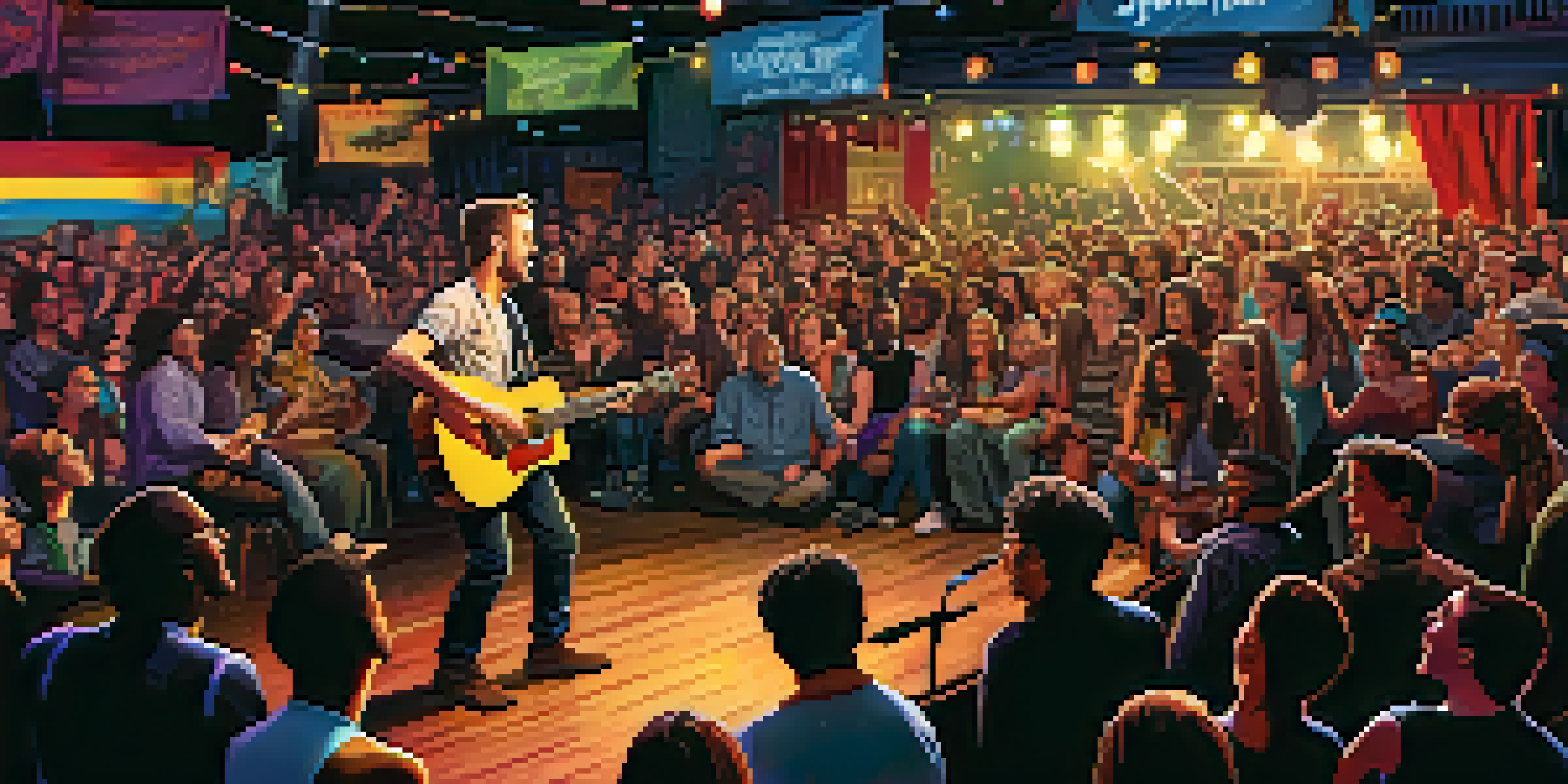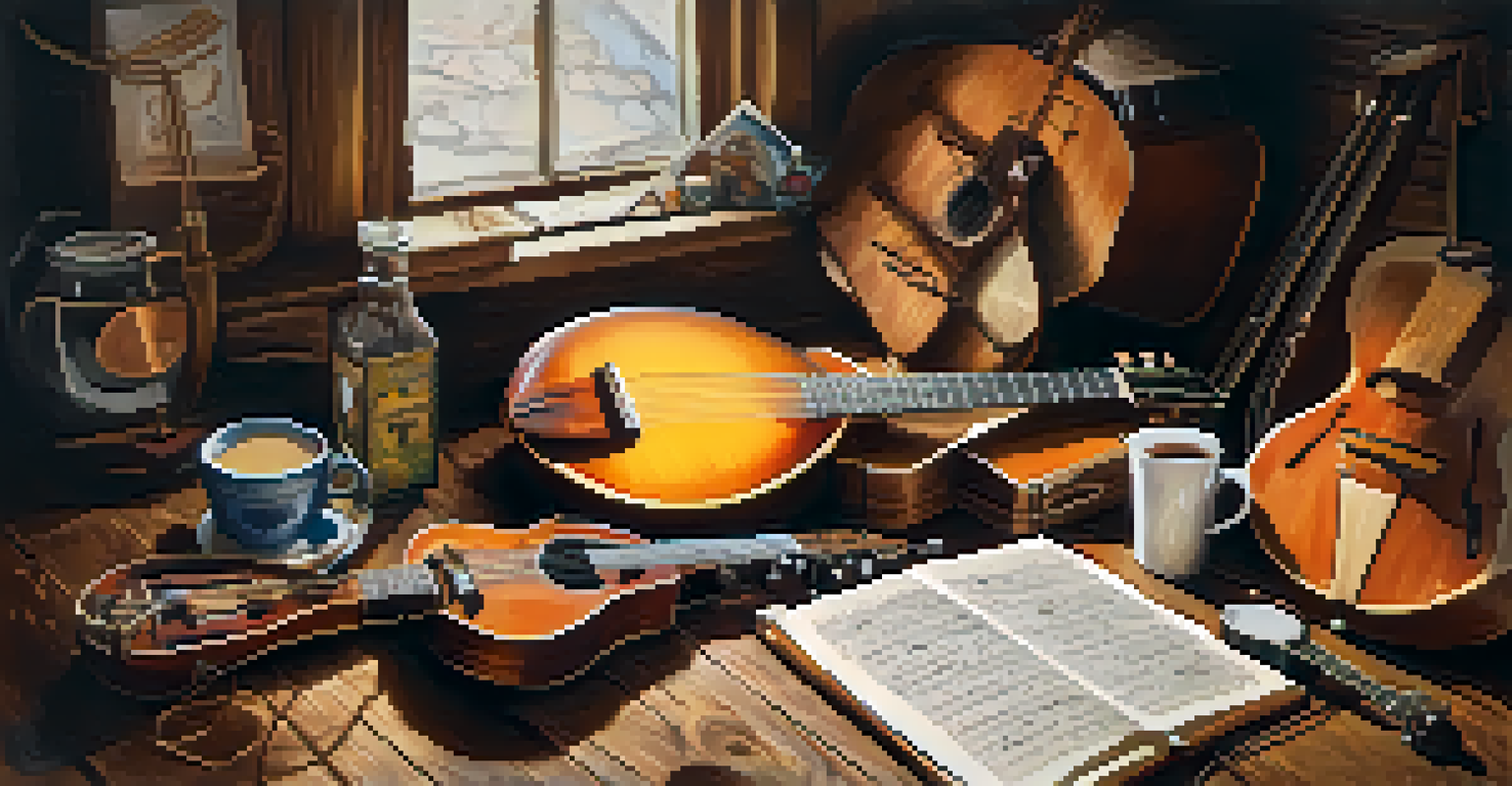Folk-Punk: The Blending of Storytelling and Raw Energy

What is Folk-Punk and Its Origins?
Folk-punk is a musical genre that marries the storytelling essence of folk music with the raw, energetic vibes of punk. It has roots deeply embedded in both traditions, drawing on folk's acoustic instrumentation and lyrical depth while embracing punk's rebellious spirit. This fusion began to gain traction in the late 1970s and early 1980s, with artists eager to break boundaries and create something distinct.
Music is the shorthand of emotion.
Think of it as a musical potluck where various influences come together to create a deliciously unique dish. Bands like The Pogues and Violent Femmes were pioneers in this space, blending traditional melodies with punk's fast-paced rhythms. This blend not only resonates with audiences but also invites them into powerful narratives that echo personal and social struggles.
Over the years, folk-punk has evolved, incorporating elements from various genres, including bluegrass and rock. Today, it continues to attract a diverse audience, appealing to those who appreciate heartfelt lyrics and high-energy performances.
The Power of Storytelling in Folk-Punk
At its core, folk-punk thrives on storytelling, weaving tales of love, loss, and rebellion into its fabric. Much like a captivating novel, these songs draw listeners in, offering a glimpse into the human experience. The narratives often reflect social issues, personal struggles, or the beauty of everyday life, making them relatable and impactful.

For instance, a song might recount the struggles of working-class individuals, using vivid imagery that paints a poignant picture. This connection helps listeners feel seen and understood, creating a sense of community among fans. The storytelling aspect is what sets folk-punk apart from other genres, as it often evokes strong emotions and inspires action.
Folk-Punk Blends Genres and Stories
Folk-punk uniquely combines the storytelling of folk music with the energetic essence of punk, creating a distinct and relatable musical experience.
Moreover, the raw energy of the music amplifies these narratives, making them even more compelling. The combination of powerful lyrics and energetic instrumentation can turn a simple song into a rallying cry, encouraging listeners to reflect and engage with the world around them.
Key Instruments and Sounds in Folk-Punk
Folk-punk showcases a diverse range of instruments that contribute to its distinctive sound. Acoustic guitars are often at the forefront, accompanied by banjos, fiddles, and mandolins that provide a rich, textured backdrop. This instrumentation creates a lively atmosphere, inviting listeners to tap their feet and sing along.
The more we are willing to be vulnerable, the more we can connect with others through our art.
Percussion in folk-punk tends to be energetic and driving, with drummers often opting for simple yet powerful beats that keep the momentum going. The combination of these elements results in a sound that is both familiar and fresh, making it accessible to a broad audience. It's like a musical hug that feels comfortable yet invigorating.
Additionally, many folk-punk songs incorporate anthemic choruses, encouraging crowd participation during live performances. This communal aspect is a hallmark of the genre, transforming concerts into shared experiences where everyone is united by the music and its messages.
The Impact of Folk-Punk on Culture
Folk-punk has made a significant cultural impact, often serving as a voice for the marginalized and disenfranchised. By addressing social issues and injustices through music, artists can inspire change and foster awareness. This genre has become a platform for activism, encouraging listeners to reflect on their values and take action.
For example, many folk-punk bands have participated in protests and community events, using their music to amplify important messages. This connection to grassroots movements reinforces the genre’s authenticity and commitment to social change. Fans often find themselves not just enjoying music but also engaging in a larger conversation about their society.
Empowerment Through Community Music
The genre serves as a platform for activism and social change, fostering a sense of community among listeners and encouraging them to engage with important issues.
In essence, folk-punk is more than just a genre; it's a cultural movement that champions storytelling and community. Its ability to resonate with listeners on multiple levels ensures that it remains relevant and influential in today's music landscape.
Notable Folk-Punk Artists to Explore
There are several artists and bands that exemplify the spirit of folk-punk, bringing their unique styles and stories to the forefront. One iconic name is The Pogues, whose blend of Irish folk and punk rock created timeless anthems that resonate with generations. Their energetic performances and poignant lyrics have secured their place in music history.
Another notable act is Frank Turner, whose solo career has become synonymous with folk-punk. With his heartfelt lyrics and engaging stage presence, Turner has garnered a dedicated fanbase. His songs often tackle personal growth, social justice, and the human experience, making him a modern voice in the genre.
Additionally, newer bands like Amanda Palmer and The Front Bottoms are carving their own paths in the folk-punk landscape. They bring fresh perspectives and contemporary themes, ensuring that the genre continues to evolve while staying true to its roots.
The Evolution of Folk-Punk: Past to Present
Folk-punk has undergone an evolution since its inception, adapting to cultural shifts and incorporating new influences. While the genre started with a distinct sound, it has expanded to include various styles and themes, reflecting the changing social landscape. This adaptability is one of its key strengths, allowing it to remain relevant in a fast-paced music industry.
Today, artists are experimenting with different genres, blending folk-punk with elements of indie rock, electronic, and even hip-hop. This fusion creates fresh sounds that appeal to a new generation of listeners, proving that folk-punk can thrive in diverse musical contexts. It's like a chameleon, changing with its environment while maintaining its core identity.
Evolution Keeps Folk-Punk Relevant
Folk-punk continuously adapts by incorporating new influences, ensuring its relevance in the ever-changing music landscape while maintaining its core focus on storytelling.
As the genre continues to evolve, it also retains its roots in storytelling and community engagement. The heart of folk-punk lies in its ability to connect with people on a personal level, ensuring that it remains a vital part of the music scene for years to come.
Why You Should Listen to Folk-Punk
Listening to folk-punk is not just about enjoying the music; it's about embracing a culture that values storytelling, authenticity, and community. The genre offers a unique blend of sound and emotion that can resonate with listeners from all walks of life. Whether you're seeking inspiration, connection, or simply a good time, folk-punk has something to offer.
Moreover, the communal aspect of folk-punk makes it an ideal genre for live performances. When you attend a folk-punk concert, you're not just a spectator; you're part of a shared experience that fosters connection and camaraderie. This sense of belonging can be incredibly powerful, creating lasting memories and friendships.

In a world that often feels divided, folk-punk serves as a reminder of the strength found in community and shared stories. So, if you haven't yet explored this vibrant genre, grab a seat, turn up the volume, and let the music take you on a journey filled with energy, emotion, and unforgettable narratives.